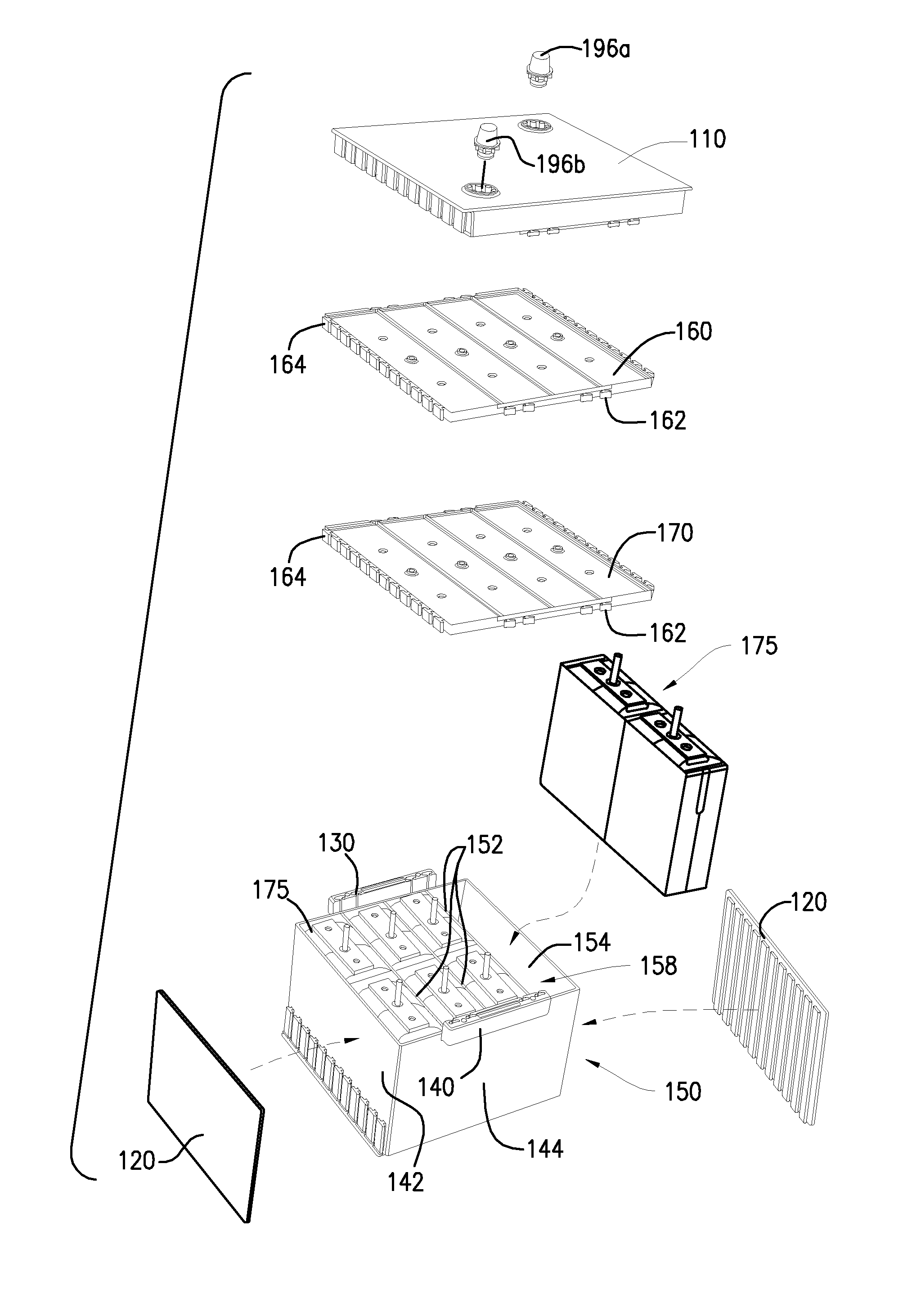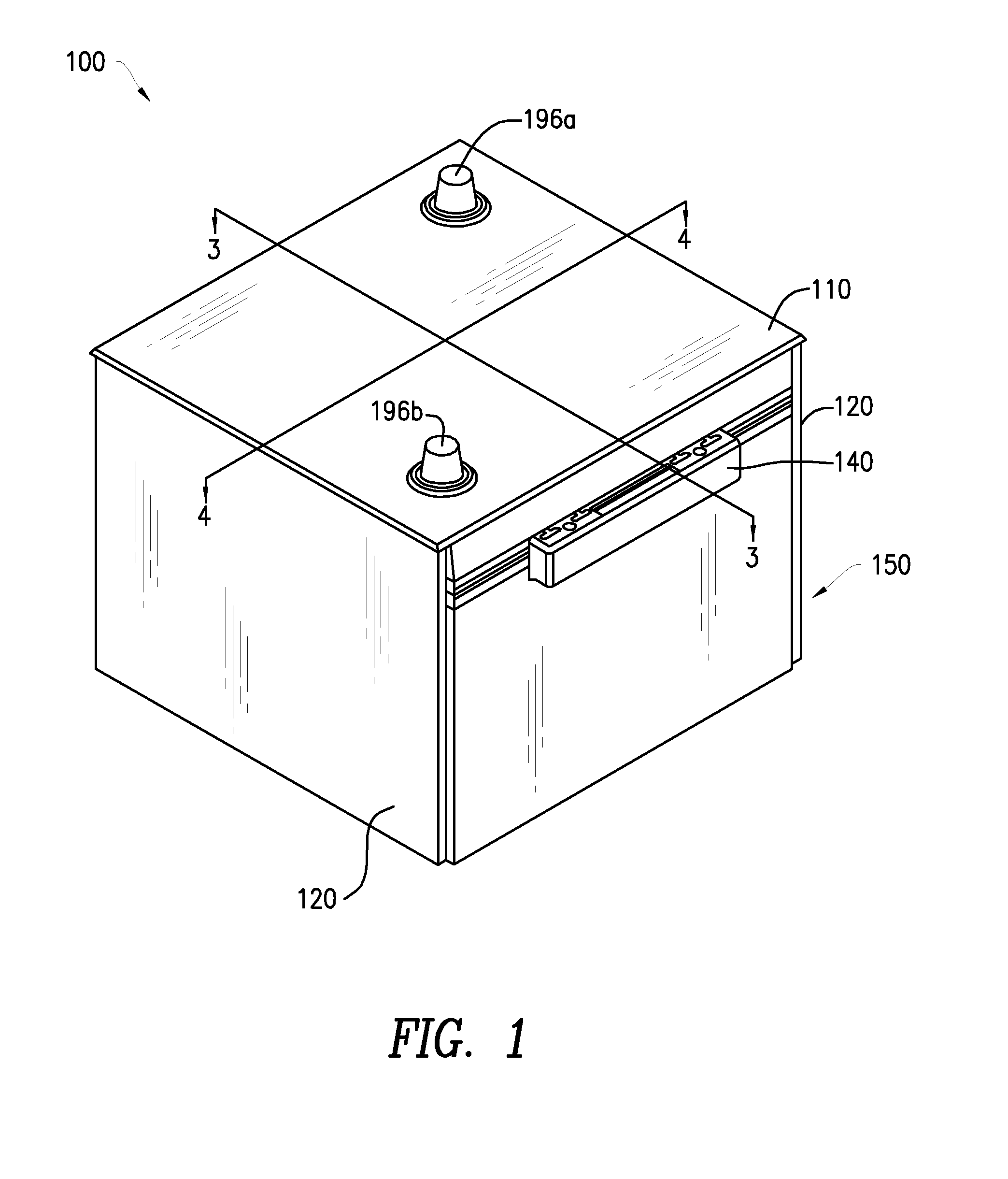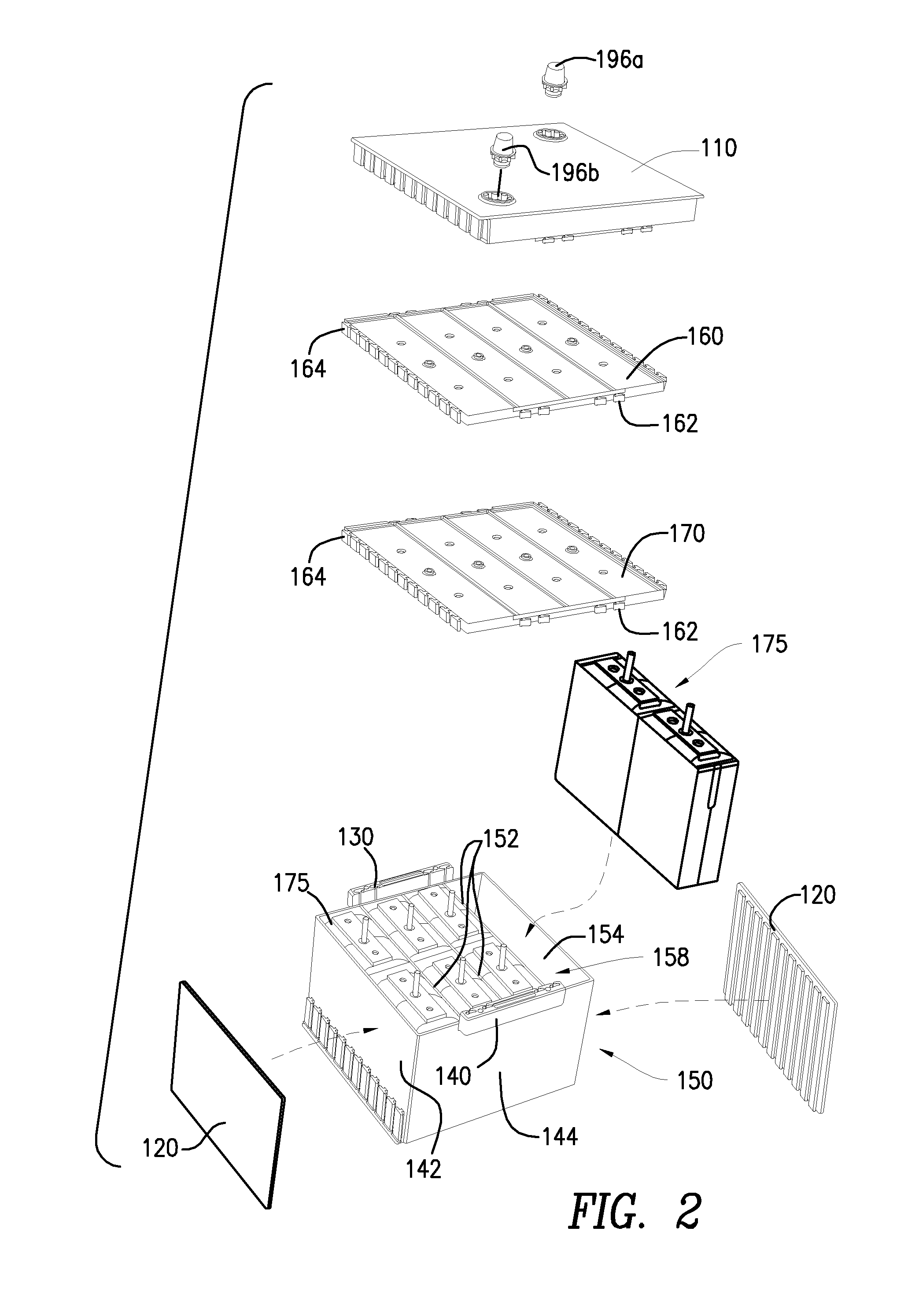Monoblock lithium ion battery
a lithium ion battery and monoblock technology, applied in the direction of battery/cell propulsion, cell components, cell component details, etc., can solve the problems of lead-acid battery sluggish acceleration, poor tolerance to deep discharge, and inability to use electric vehicles
- Summary
- Abstract
- Description
- Claims
- Application Information
AI Technical Summary
Benefits of technology
Problems solved by technology
Method used
Image
Examples
Embodiment Construction
[0025]FIGS. 1 and 2 show a monoblock lithium ion battery case 100 of the present invention. The case 100 includes a base 150 and a cover 110. Handles 140 are disposed on sides 144 of the base 150 and endplates 120 disposed at ends 142 of the base 150. The sides and ends of the base 150 are connected to a bottom (not shown) and define the base 150 with an open top. The bottom may be integrally molded with the sides 144 and ends 142 or joined to the case 100 through plastic welding techniques or other known methods. The cover 110 is dimensioned and configured to fit over the open top of the base 150 forming the case 100.
[0026]Referring to FIG. 2, base 150 defines chambers 158 for a plurality of cells defined by cell compartments walls 152. Four cell compartments 154 of uniform widths are shown in the figures. Generally, each cell compartment wall 152 is thin, but the wall 152 may be thicker in some embodiments. The case 100 is not limited by number or by the widths of the cell compart...
PUM
| Property | Measurement | Unit |
|---|---|---|
| force | aaaaa | aaaaa |
| compression pressure | aaaaa | aaaaa |
| perimeter | aaaaa | aaaaa |
Abstract
Description
Claims
Application Information
 Login to View More
Login to View More - R&D
- Intellectual Property
- Life Sciences
- Materials
- Tech Scout
- Unparalleled Data Quality
- Higher Quality Content
- 60% Fewer Hallucinations
Browse by: Latest US Patents, China's latest patents, Technical Efficacy Thesaurus, Application Domain, Technology Topic, Popular Technical Reports.
© 2025 PatSnap. All rights reserved.Legal|Privacy policy|Modern Slavery Act Transparency Statement|Sitemap|About US| Contact US: help@patsnap.com



